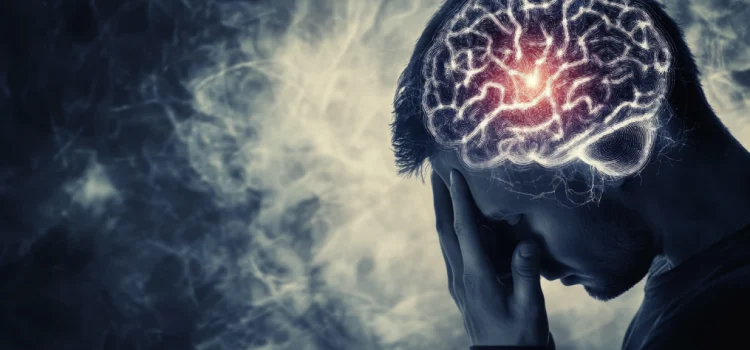
What happens in your brain when someone you love dies? How does your brain process and adapt to loss?
In The Grieving Brain, psychologist Mary-Frances O’Connor explores how our brains create maps to track loved ones and what happens when death disrupts these mental maps. Her research reveals why grief takes time and how our brains gradually adjust to the permanent absence of someone we love.
Read on to explore the fascinating—and insightful—science of grief.
The Science of Grief
To begin her discussion of the science of grief, O’Connor addresses grief’s evolutionary origin. She asserts that our brains have evolved to keep track of our loved ones. In order to do this, we create neural “maps” to understand where they are in relation to us. These are virtual representations of our surroundings that make it easier for us to navigate through the world. For example, you don’t have to relearn the layout of your office every day you go to work—that would be energy- and time-consuming and would make it harder for you to function in that space. Instead, your brain builds a map of that space, and you use this map every time you go to the office to navigate through what you know—or expect—will be there.
(Shortform note: You can take advantage of the brain’s mapping system to enhance your learning and memory. Experts note that the part of the brain responsible for this mapping also forms long-term memories. Because of this, creating visual concept maps of information you’re trying to learn or remember taps into this system and improves your retention of the information. Consider creating hand-drawn or computer-generated concept maps when you’re trying to memorize new information, using images in place of lots of text.)
According to O’Connor, the brain’s mapping system evolved first to help creatures find food, but it later adapted to tracking social connections and loved ones. Beginning in infancy, our brains form attachment bonds to our caregivers, and we learn that they will be there for us when we look for them. If they’re not there, we know that they’ll soon return. This expectation becomes hardwired into our brains, and as we form attachments with other people, they come to occupy spaces in our neural maps. The brain identifies a pattern (for example, coming home from work and seeing your spouse) and makes predictions based on that pattern (“When I come home from work, I’ll see my spouse”).
This mapping system is important because without it, we wouldn’t be able to understand that our loved ones will return if they’re not currently here. To illustrate, O’Connor describes how pair-bonded Emperor penguins must spend months incubating their eggs while their partner goes to find food. If the incubating penguin believed their partner wouldn’t return, they’d have to go find their own food, leaving the egg to die. The maps in the penguin’s brain allow it to wait for the return of its partner. They served the same function for evolving humans—without these maps, if our caregiver or mate left to get food for us, we’d assume they’d be gone forever and wouldn’t wait for their return. We’d be unable to function the way we need to in their absence.
(Shortform note: Just as humans experience grief when a loss disrupts their maps, Emperor penguins also appear to grieve after a loss, as evidenced by a video of an Emperor penguin seemingly mourning her lost chick. Other animals as well, including elephants, magpies, wolves, and llamas, appear to demonstrate sadness, engage in mourning rituals, and seek comfort from each other after a loss. In some cases, they may even die of a broken heart after a loss.)
| Attachment Theory and Styles The way our attachment needs are met in early childhood can affect how we form attachments to others. According to attachment theory, developed by John Bowlby and expanded upon by Mary Ainsworth, infants attach to their caregivers differently depending on the availability of the caregiver and the quality of care they receive. This gives rise to four attachment styles: ambivalent attachment, avoidant attachment, disorganized attachment, and secure attachment. Differences in these styles can be seen in how the child reacts to the caregiver’s absence. Anxiously attached (also known as ambivalently attached) children become very distressed in the caregiver’s absence. This style may result from a lack of consistent attention from the caregiver, leading the child to learn that they can’t depend on them. Avoidantly attached children don’t show a preference for their caregiver over a stranger. This style may be the result of neglect or abuse that teaches the child not to seek help from their caregiver. In disorganized attachment, the child demonstrates a mix of responses to the caregiver’s absence, often seeming confused or disoriented. This may result from inconsistency in caregiving, in which the child associates both fear and comfort with the caregiver. Securely attached children become distressed in the caregiver’s absence and show joy upon their return. This style is the most common and is the result of children feeling like their caregiver is a consistent source of comfort. Attachment theory suggests that the attachment style a child develops in infancy can continue to affect how they attach to other people later in life. However, your attachment style may not be set in stone: Attachment-based therapy can help you develop a more secure attachment style and cultivate more meaningful relationships with others. Your attachment style may impact how you experience grief. |
How Death Affects the Brain’s Maps
According to O’Connor, death presents a unique challenge to this mapping system because it requires us to comprehend that someone no longer exists in time or space—a concept that doesn’t fit with our brain’s basic operating principles. Just as it would be incomprehensible to wake up and find that water no longer exists, our brains struggle to process the permanent absence of someone who was integral to our mental map of the world.
This is why grief healing takes time: It’s not about the passage of time itself, but about accumulating new experiences that gradually update our brain’s predictions and maps. Each day without the person provides new data that slowly helps our brain adapt its expectations. This learning happens automatically, regardless of our conscious intention, which is why going about daily life—even without actively “grieving”—contributes to the healing process. In the same way that you can’t jump from learning the basics of a new language to immediately being fluent, this learning process of grief healing can’t be rushed.
| The Role of Neuroplasticity in Grieving The reason the brain is able to adjust in the way O’Connor describes is thanks to neuroplasticity. Neuroplasticity refers to the brain’s ability to change its structure and function in response to stimuli. The brain does this by creating new connections between neurons or even creating new neurons entirely (neurogenesis). An important concept in the study of neuroplasticity is Hebbian theory, which states that the more you use a certain neural pathway (for example, by doing a certain task or recalling a certain memory), the stronger that pathway becomes. In relation to neural maps, this means that, immediately following a loss, the pathways involved in tracking your loved one in space and time are very strong, having been built up and strengthened throughout the course of your relationship with that person. However, each new stimulus related to that person’s absence—each reminder that they’re not there—weakens those previous pathways and strengthens new ones that contribute to understanding that that person is gone. So as you grieve and come to terms with your loss, it’s not just your thoughts that are changing; it’s also the physical structure of your brain itself. |






